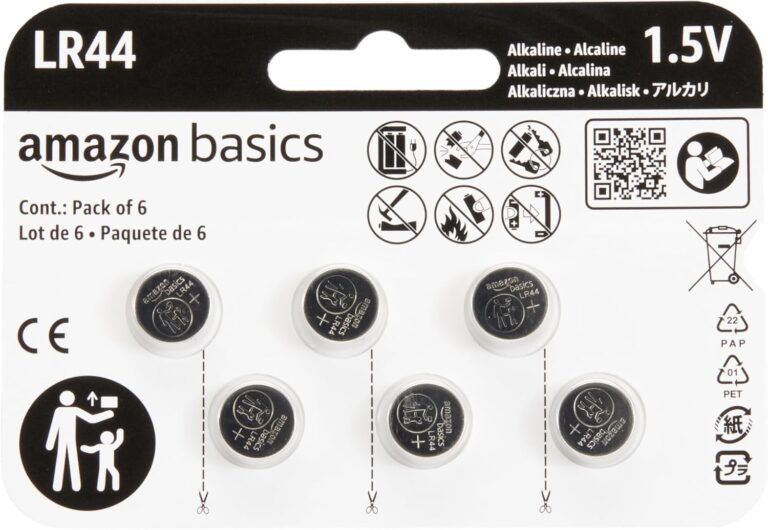
VisionWave (NASDAQ:VWAV) announced a partnership with PVML to add AI infrastructure integration to its defense hardware portfolio, combining VisionWave radar and computer-vision systems with PVML’s real-time data-AI backbone.
The companies set a deployment timeline with initial field integration in select defense units, accelerated rollout through 2026, and a full operational platform targeted for 2027. Preliminary estimates target 45–55% reductions in data redundancy and 35–40% faster cross-domain coordination as the platform is deployed.
The move aims to create a secure, permissions-governed data layer for autonomous systems while preserving operational speed and to shift VisionWave from a hardware supplier to a hardware-plus-infrastructure integrator.
VisionWave (NASDAQ:VWAV) ha annunciato una partnership con PVML per aggiungere integrazione dell’infrastruttura AI al suo portafoglio di hardware per la difesa, combinando il radar VisionWave e i sistemi di visione artificiale con la backbone in tempo reale dei dati AI di PVML.
Le aziende hanno definito una timeline di implementazione con una prima integrazione sul campo in unità difensive selezionate, accelerando il deployment entro 2026 e un piattaforma operativa completa prevista per 2027. Le stime preliminari indicano una riduzione dei dati ridondanti del 45–55% e una coordinazione cross-domain del 35–40% più veloce man mano che la piattaforma viene implementata.
La mossa mira a creare uno strato dati sicuro, governato dai permessi, per sistemi autonomi, mantenendo la rapidità operativa e trasformando VisionWave da fornitore di hardware a integratore di hardware più infrastruttura.
VisionWave (NASDAQ:VWAV) anunció una asociación con PVML para añadir integración de infraestructura de IA a su portafolio de hardware de defensa, combinando el radar VisionWave y los sistemas de visión por computadora con la columna vertebral de datos-IA en tiempo real de PVML.
Las compañías definieron una cronología de despliegue con una integración inicial en el campo en unidades de defensa selectas, una implementación acelerada hasta 2026 y una plataforma operativa completa prevista para 2027. Las estimaciones preliminares apuntan a reducciones de 45–55% en la redundancia de datos y una coordinación entre dominios 35–40% más rápida a medida que se despliega la plataforma.
El objetivo es crear una capa de datos segura, gobernada por permisos, para sistemas autónomos, manteniendo la velocidad operativa y convertir a VisionWave de un simple proveedor de hardware a un integrador de hardware más infraestructura.
VisionWave (NASDAQ:VWAV)는 PVML과 파트너십을 발표하여 자사 방산 하드웨어 포트폴리오에 AI 인프라 통합을 추가하고, VisionWave 레이더 및 컴퓨터 비전 시스템을 PVML의 실시간 데이터 AI 백본과 결합합니다.
양사는 선택된 방위 부대에서의 초기 현장 통합을 시작으로 배포 일정과 2026년까지의 가속화된 롤아웃, 그리고 2027년에 목표로 하는 완전 운영 플랫폼을 설정했습니다. 예비 추정에 따르면 플랫폼 배치 시 데이터 중복 감소가 45–55%, 교차 도메인 조정 속도는 35–40% 더 빨라질 것으로 예측됩니다.
이 움직임은 자율 시스템을 위한 보안이 강화된 권한 기반 데이터 계층을 창출하는 동시에 작전 속도를 유지하고 VisionWave를 하드웨어 공급자에서 하드웨어+인프라 통합자로 전환하는 것을 목표로 합니다.
VisionWave (NASDAQ:VWAV) a annoncé un partenariat avec PVML pour ajouter l’intégration d’infrastructures IA à son portefeuille de matériel de défense, en combinant le radar VisionWave et les systèmes de vision par ordinateur avec l’épine dorsale IA des données en temps réel de PVML.
Les entreprises ont établi un calendrier de déploiement avec une intégration sur le terrain initiale dans certaines unités de défense, un déploiement accéléré jusqu’en 2026, et une plateforme opérationnelle complète visée pour 2027. Les estimations préliminaires visent des réductions de 45–55% des redondances de données et une coordination inter-domaines plus rapide de 35–40% à mesure que la plateforme est déployée.
Cette démarche vise à créer une couche de données sécurisée et gouvernée par les autorisations pour les systèmes autonomes tout en préservant la vitesse opérationnelle et à faire évoluer VisionWave d’un simple fournisseur de matériel à un intégrateur matériel-plus-infrastructures.
VisionWave (NASDAQ:VWAV) hat eine Partnerschaft mit PVML angekündigt, um AI-Infrastruktur-Integration zu seinem Verteidigungshardware-Portfolio hinzuzufügen, indem VisionWave-Radar- und Computer-Vision-Systeme mit dem Echtzeit-Daten-Kern von PVML kombiniert werden.
Die Unternehmen legten einen Implementierungszeitplan fest, mit einer ersten Feldintegration in ausgewählten Verteidigungseinheiten, einer beschleunigten Markteinführung bis 2026 und einer vollständig operativen Plattform, die auf 2027 abzielt. Vorläufige Schätzungen zielen auf 45–55% Reduzierung von Datenredundanz und 35–40% schnellerer bereichsübergreifender Koordination, während die Plattform implementiert wird.
Die Maßnahme zielt darauf ab, eine sichere, berechtigungsbasierte Datenschicht für autonome Systeme zu schaffen, die Betriebs Geschwindigkeit zu erhalten und VisionWave von einem reinen Hardware-Lieferanten zu einem Hardware-plus-Infrastruktur-Integrator zu entwickeln.
VisionWave (NASDAQ:VWAV) أعلنت عن شراكة مع PVML لإضافة تكامل بنية AI التحتية إلى محفظة أجهزتها الدفاعية، من خلال دمج رادار VisionWave وأنظمة الرؤية الحاسوبية مع العمود الفقري للبيانات-الذكاء الاصطناعي في الوقت الفعلي لدى PVML.
حددت الشركات جدول نشر مع التكامل الميداني الأول في وحدات دفاعية مختارة، وتوسيعه بسرعة حتى 2026، وهدف منصة تشغيل كاملة بحلول 2027. تشير التقديرات الأولية إلى تقليل البيانات المكررة بنسبة 45–55% وتسريع التنسيق عبر المجالات بنسبة 35–40% مع نشر المنصة.
تهدف الخطوة إلى إنشاء طبقة بيانات آمنة يحكمها الأذونات للمركبات الذاتية التشغيل مع الحفاظ على السرعة التشغيلية وتحويل VisionWave من مورد أجهزة إلى مزود أجهزة-بنية تحتية مدمجة.
Positive
- Targeted 45–55% data redundancy reduction
- Targeted 35–40% faster mission coordination
- Strategic shift to hardware-plus-infrastructure integration
Negative
- Performance estimates unvalidated until field integration
- Deployment timeline extends to 2027, creating execution risk
Insights
VisionWave’s PVML partnership shifts it from sensor vendor to AI infrastructure integrator, aiming to raise system value and capture more of defense digital stack.
VisionWave combines its radar and computer‑vision sensors with PVML’s real‑time data and permissions architecture to create a single operational data layer. The move adds an infrastructure services dimension to the existing hardware revenue model and targets concrete efficiency gains:
Execution depends on meeting integration milestones and validating the stated performance figures under operational conditions. The companies plan field validation with defense units first, which will test whether the built‑in permissions approach preserves speed while enforcing security. Monitor milestone delivery, independent performance validation of the cited
BRISTOL, TN / ACCESS Newswire / October 30, 2025 / VisionWave Holdings, Inc (NASDAQ:VWAV) is adding infrastructure integration capabilities that could multiply the value of its hardware.
The company’s partnership with PVML Ltd. represents a strategic repositioning that defense investors should examine closely. VisionWave is expanding from hardware supplier to become both a hardware and AI infrastructure integrator, a move that enhances its competitive position in the defense digital stack.
The execution phase begins now, following meetings at PVML’s Tel Aviv headquarters between VisionWave’s Executive Chairman Douglas L. Davis, Audit Committee Chair Haggai Ravid, and PVML’s co-founders Dr. Shachar Schnapp and Rina Galperin.
What They’re Actually Building
The partnership integrates VisionWave’s radar and computer vision systems with PVML’s real-time data-AI infrastructure. The technical architecture addresses a core defense priority: enabling autonomous AI systems while maintaining data security.
PVML’s infrastructure creates what the companies describe as a “secure digital backbone” where mission data, analytics, and decision logic converge in real time. Real-time permissions enforcement governs every layer of access, transmission, and model interaction.
The U.S. Army has been explicit about this priority. Officials now emphasize that decision dominance belongs to whoever can process battlefield data most effectively. Information dominance has become the critical factor in multidomain operations against near-peer adversaries.
VisionWave’s radar and vision systems generate massive amounts of real-time data. PVML’s infrastructure determines who can access that data, when, and under what conditions, all while maintaining operational speed.
The Deployment Timeline
The partnership has established specific milestones. Initial field integration with select defense units comes first. Accelerated rollout continues through 2026. Full operational platform targeted for 2027.
Preliminary performance estimates suggest 45-55 percent reductions in data redundancy and 35-40 percent faster coordination across mission domains. The companies are targeting these efficiency gains as deployment progresses.
Organizations using AI security extensively have demonstrated measurable advantages. Companies leveraging security AI save an average of
VisionWave and PVML are working to deliver comparable performance improvements in defense applications where requirements are particularly demanding.
Why Infrastructure Matters Alongside Hardware
Defense operations increasingly depend on processing vast amounts of sensor data in real time. Modern military systems rely on signal processing that transforms raw data into situational awareness through surveillance, targeting, and autonomous systems.
AI-enabled radar and LiDAR using machine learning algorithms improve target detection, tracking, and clutter reduction. But the hardware generating this data is only valuable if the infrastructure can securely process, distribute, and act on it at operational speed.
VisionWave’s evolution reflects this reality. Selling radar systems provides one revenue model. Adding infrastructure integration capabilities that enhance those systems creates an additional revenue stream and strengthens the overall value proposition.
The partnership positions VisionWave as an enabler of autonomous defense operations while continuing its sensor supply business. That distinction matters for competitive positioning and long-term contract value.
The Security-Speed Paradox
Defense AI faces a fundamental tension. Autonomous systems require real-time data processing and decision-making. Security protocols traditionally slow things down.
PVML’s approach attempts to resolve this by building permissions enforcement directly into the data infrastructure rather than layering it on top. Every data interaction, model query, and decision pathway operates within a governed framework that maintains security without sacrificing speed.
Field integration with defense units will provide real-world validation of the infrastructure’s ability to handle operational demands at scale.
What This Signals About Defense Digital Transformation
VisionWave’s strategic shift reflects broader patterns in defense procurement. Hardware capabilities are becoming table stakes. Infrastructure that enables those capabilities to work together securely and efficiently is becoming the differentiator.
The partnership also highlights the growing importance of international collaboration in defense technology. PVML brings Israeli expertise in real-time data infrastructure and cybersecurity. VisionWave provides radar and vision systems with U.S. defense market access.
The deployment timeline through 2027 provides measurement points for investors to evaluate progress. Initial field integration will signal technical validation. Rollout pace through 2026 will indicate market acceptance. Full platform deployment will demonstrate whether the partnership achieves its stated efficiency gains.
Investment Implications
VisionWave’s expansion from hardware supplier into infrastructure integration changes its competitive profile. The company is moving up the value chain in defense digital architecture.
Success could position VisionWave as an essential component in autonomous defense operations, expanding beyond its traditional sensor supplier role.
The partnership structure with PVML distributes development risk while enabling shared resources and expertise. Joint execution leverages the complementary capabilities of both organizations.
Investors should monitor three factors: deployment milestone achievement, performance metric validation, and contract expansion beyond initial field integration. Each provides evidence about execution capability and market acceptance.
The defense AI infrastructure market is attracting significant attention and investment. VisionWave’s partnership with PVML represents one approach to capturing value in this space. The partnership’s success will be measured by technical execution, market timing, and the delivery of targeted efficiency gains under operational conditions.
The company’s expansion into infrastructure integration while maintaining its hardware business represents a strategic evolution. The deployment timeline through 2027 will provide key indicators of progress.
About Vanderbilt Report
Vanderbilt Report is a financial news and content platform. The information contained in this release is for informational purposes only and should not be considered an offer to buy or sell securities. All material is provided “as is” without any warranty of any kind.
Media Contact
Kristen Owens
info@vanderbiltreport.com
Compliance Note
The Vanderbilt Report is a financial news and analysis platform. The information contained herein is based on publicly available sources, regulatory filings, and company disclosures believed to be accurate at the time of publication. This report is for informational purposes only and should not be construed as investment advice, a solicitation, or an offer to buy or sell any security.
Readers are encouraged to perform their own due diligence and consult a licensed financial advisor before making any investment decisions. All forward-looking statements are subject to risks and uncertainties that may cause actual results to differ materially.
Vanderbiltreport.com is owned and operated by AB Holdings, a US-based corporation. We have received compensation of up to
This page includes forward-looking statements subject to substantial risks and uncertainties. Actual outcomes may differ due to clinical trial results, regulatory decisions, financing needs, and execution. Investors should consult SEC filings before making decisions.
SOURCE: VisionWave Holdings
View the original press release on ACCESS Newswire
FAQ
What did VisionWave (VWAV) announce on October 30, 2025?
VisionWave announced a partnership with PVML to integrate its radar and vision hardware with PVML’s real-time AI data infrastructure.
What is the planned deployment timeline for VisionWave and PVML integration (VWAV)?
Initial field integration begins now with accelerated rollout through 2026 and a full operational platform targeted for 2027.
What performance improvements are VisionWave (VWAV) and PVML targeting?
Preliminary estimates target 45–55% reductions in data redundancy and 35–40% faster coordination across mission domains.
How does the VisionWave (VWAV) partnership change the company’s business model?
VisionWave is expanding from a sensor-only supplier into a combined hardware and AI infrastructure integrator, adding a new revenue stream.
What security approach will VisionWave (VWAV) and PVML use for autonomous systems?
They plan a permissions-enforced digital backbone that governs data access, transmission, and model interaction to preserve security without slowing operations.
What should investors monitor after VisionWave’s (VWAV) announcement?
Investors should track deployment milestone achievement, validation of the performance metrics, and contract expansion beyond initial field integration.






